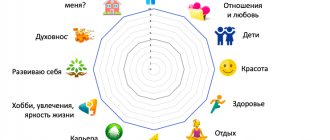Pattern is a term that denotes a repeating pattern; it can also be called a sample, model, diagram or image. The concept comes from the English “pattern” and is translated, as an example, form. Thanks to the pattern, a mediating representation is created, with the help of which, in the mode of synchronicity of the processes of perception and thinking, patterns appear, as well as the way they exist in the surrounding world, nature, and society.
A pattern is a repeating pattern or template whose components repeat in a predictable manner. Patterns may be perceived differently, depending on the sensory organ with which they are felt.
There are various patterns of behavior. Examples of them can be seen in various areas of life: from early washing to special professional ones.
What is a pattern in psychology
Pattern is a term that refers to a pattern that repeats itself over and over again.
It can be considered a specific sample, image, model or corresponding diagram. With the help of a pattern, you can create an idea of how exactly various patterns occur with a certain way of existence in society, the surrounding world and nature. This can be used by specialists who study the characteristics of human behavior and the way they react in certain situations. A pattern will be considered a repeating pattern or sample, parts of which are repeated in accordance with a previously known algorithm. We can talk about the lack of identical perception of patterns. Of no small importance is the organ that helps you feel certain sensations.
It is important to mention a variety of behavior patterns. Psychologists say that in accordance with them, we begin to wash ourselves early in the morning, perform professional duties, and go to bed. Don't underestimate the individual characteristics of each of us.
- What do you need to know about the pattern?
- Pattern in the context of psychology
- Conclusion and conclusions about patterns in psychology
- Consultation with a psychologist to solve the problem
Pattern as a stereotype of thinking
Among our thoughts there are those that we reproduce mechanically, automatically. They are called stereotypes - as a rule, these are not very useful attitudes that are firmly “hardwired” into the brain. also be called patterns - the habit of thinking in a certain way in a specific situation.
A thought pattern, on the one hand, simplifies our existence: there is no need to waste time and look for options for action, just follow the pattern in your head. On the other hand, such predictability makes a person boring and uninteresting even to himself.
Examples of thinking patterns are the following thought forms: they insulted me - I insult in return, they said something nice - I’m happy, they didn’t call back - it means I’m uninteresting, a drunkard is a bad person, fat people are good-natured, etc.
What do you need to know about the pattern?
Patterns can be used in a variety of areas of our lives. We can note such sciences as: computer science, physics, psychology, creativity, design, music. It is important to note that a person automatically reproduces such a pattern of behavior. In this way we continuously interact with the world around us. In accordance with approved patterns, we answer the phone, sit at the table, wash our face in the morning, and start getting dressed.
Psychologists say that a pattern is a pattern of behavior that is characteristic of a person in certain circumstances and situations.
In mathematical sciences, patterns can be identified through exploration. Direct observation helps to understand exactly how visual projections are formed in the spheres of art and nature. We can mention the chaotic nature in the natural environment, the presence of fractionation, and the lack of ability to imitate each other. They may well occur in such forms as: cracks, foam, waves, various spirals. They represent the phenomenon of reflection and symmetry.
This type of template contains a mathematically based structure that can be expressed through developed formulas. Mathematics is the usual way of finding regularities, while each end product from the use of different functions is precisely a mathematical pattern.
Work related to the study and prediction of scientific theories, simultaneously existing patterns in society and nature, is an important process of identifying each pattern.
In art, design and architecture, to achieve a certain lasting impact, various visual aspects, decorations can form a combination, subsequent repetition, to lead to the creation of models and images. At the same time, projection patterns in the field of information technology can often be used as a solution to a wide range of problems related to programming.
In medical sciences, we can talk about the perception of a pattern as a stable combination of all the research results obtained, other signs, and symptoms of similar patient complaints. The pattern consists of several types of symptoms. The cider will contain one or two patterns. The disease will include a syndrome or several of its varieties.
Patterns are distinguished by the presence of characteristic properties. They represent a stable category that is fairly easy to define. We can talk about their constant repetition. They will be created by unconscious algorithms that are difficult to correct in any way. We can talk about their partial or complete manifestation. It is possible to identify part of these directions, which will be called a code. For example, a person in a certain situation listened to a composition that was remembered for a long time. After some time, he hears this song and images appear before his eyes, emotions and feelings awaken (see What emotions really are) that were experienced during that period. This suggests that the melody is a code, the launch of which leads to the emergence of a pattern.
The innate pattern represents a starting point, an initial template that can be layered on top of each other. Thus, a combination with a pattern will represent a connection with the stereotypes, values and habits of an individual (See Psychotypes of personalities) in order to develop his lifestyle and character. We can talk about the presence of interaction between patterns that cannot exist separately.
It is worth mentioning the continuous formation of personality, the acquisition of knowledge, experience, and self-improvement. During human development, there will be a transformation of all existing patterns with constant modernization or change in the very form of expression. It is worth giving a fairly striking example that concerns a bachelor. He may still decide to start a family, but be faced with the persistence of behavioral patterns. He will want to spend time with friends, have personal space, despite the presence of a spouse (see How to Maintain Good Relationships in the Family), and the birth of children. It is important to understand that after some time you will encounter a weakening of the effect of this pattern. A man will be able to get used to the fact that he is now responsible not only for his own life, but also for the life of his beloved woman and children.
In architecture and design
Repeating components for decoration purposes are widely used:
- in architecture, design patterns can be seen on any house: balconies, windows, porches, columns - all these are patterns that are reproduced when the building is laid out. They are best seen in ancient buildings, when various monograms, stucco moldings and other delights were especially popular;
- in design: if you look at your patterned wallpaper, you will most likely notice that the pattern is constantly repeated. Patterns can also be observed on clothes, blankets, bed linen, dishes, printed materials, sidewalks, tiles, parquet, etc.
Pattern in the context of psychology
A psychological pattern is a stable pattern of behavior that people adhere to. Similar patterns can be identified when we observe our surroundings. Everyone is capable of exhibiting different behaviors in the same circumstances, but the reaction of an individual cannot be predicted with certainty. This aspect is the subject of research specifically by specialists in the field of social psychology.
You can track certain patterns of behavior to make it much easier to interact with other people. When studying behavioral patterns, a person realizes what exactly to expect from his communication partners in order to act in accordance with certain characteristics.
For example, if a new acquaintance is reserved (see: An introvert loves solitude) and has a reluctance to visit entertainment venues, it would be foolish to invite him to a noisy party. A person may simply become offended (see How to Forgive Offenses) or completely stop communicating. He will feel extremely uncomfortable if he finds himself in circumstances that do not suit him.
It is important to take into account the interests of your environment in order to understand what kind of reaction will be shown at one time or another. In this way, it will be possible to maintain good relationships and avoid conflict situations. You should not be surprised if a person displays behavior that is unusual for him. He simply found himself in new conditions to which he had not yet had time to fully adapt.
We can talk about the presence of such a type of patterns as hypnotic ones (see Hypnosis and anchors). They are special, verbal formulas that help to immerse a person in a kind of trance state. The person will not even realize that he has become the victim of a manipulator (see How to manipulate a person), a fraudster who uses his abilities for selfish purposes.
A person may well turn to a psychologist if he finds himself in a situation involving problems when interacting with the outside world. He can tell the specialist everything that is painful. In this case, you will have to take several tests and follow recommendations in order to change the negative pattern of your behavior (see Negative motivation). After some time, the patient will be prescribed a course of appropriate psychocorrective techniques.
Patterns in nature
What a pattern is can also be understood by observing natural phenomena, for example:
- water bubbles, sea foam;
- sand dunes in the desert;
- waves on the water;
- symmetrical snowflake pattern;
- web;
- fractals on leaves (for example, a fern leaf consists of identical “leaves” of different sizes;
- spiral on shells;
Characteristics and properties
Behavioral patterns are the basis of human daily life. The brain of 99% of people is designed in such a way that identical actions performed several times within a short period of time are automatically transformed into a regular algorithm.
The person carries out further manipulations unconsciously. The longer the same actions or a certain type of work are performed, the more advanced the technological process becomes. Movements brought to automaticity increase the functionality of the brain and also save its energy to support other physiological processes of the body.
At the same time, there is an opinion that, from a psychological point of view, patterns suppress the personal development of an individual. A person who daily performs similar actions in automatic mode falls into the routine of the same situations. The longer people stay within a pattern, the more difficult it is to break the already formed chain of behavioral patterns.
When trying to create a new model of behavior in a particular life situation, to abandon an already formed pattern, the brain will in every possible way resist this initiative. For example, a person will simply become forgetful, absent-minded, uncollected.











